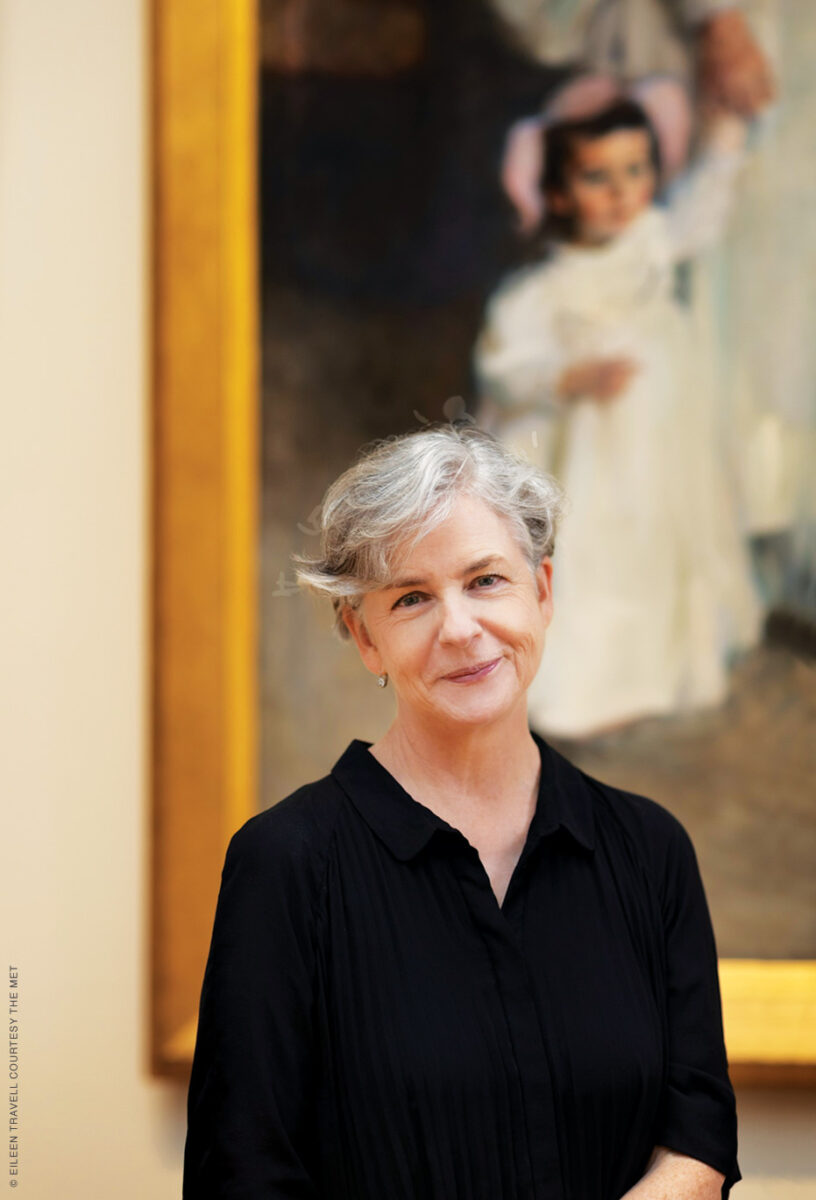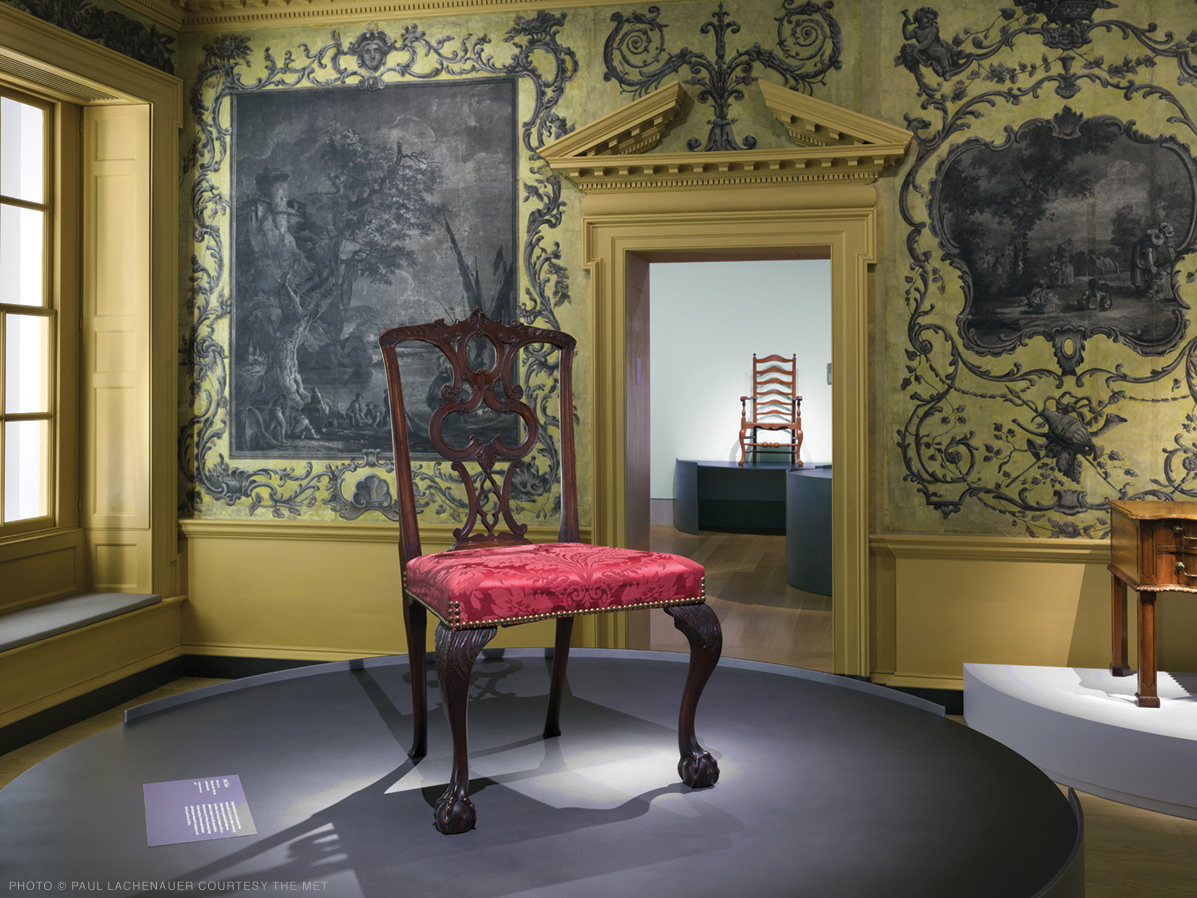
A 100th anniversary renovation presents the museum’s iconic collection in a modern light.
Even the most venerable of cultural institutions can benefit from an occasional overhaul, and this has recently been the case with the American Wing at the Metropolitan Museum of Art in New York. One of the finest collections of its kind in the country, it turned 100 in November.
To mark this milestone, Sylvia Yount G’90 Gr’95—the wing’s Lawrence A. Fleischman Curator in Charge—led a judicious campaign of reinstallation and reinterpretation. The changes remain true to the wing’s founding spirit but at the same time offer visitors a broader, more nuanced view of the American past, incorporating diverse voices and previously untold stories.
The wing was conceived during the height of the Colonial Revival architectural movement that was originally sparked by the Centennial Exhibition of 1876 in Philadelphia. During a period when large numbers of immigrants were arriving in New York, the American Wing’s mission in part was to build cultural identity by promoting a British-American historical narrative.
“The idea was you would go through those rooms, and you would learn the stories of those early families,” Yount says, “and this would contribute to the Americanization of those new Americans by telling what was considered to be the proper, the true history of this country.”
Yount’s curatorial career took shape an ocean away in Urbino, Italy. As an NYU undergrad, she majored in Italian, and while she initially considered working for the UN, a semester abroad opened her eyes to the world of material culture. “Urbino is a beautiful Renaissance jewel of a town, and it was something about being in that environment that made me think, Wow, I really want to work with the objects, with art, and not just with language and literature. I took an art history course as well and realized that this could be a career path for me.”
Back in the US, she landed a job at the Isabella Stewart Gardner Museum in Boston, and it was there that she decided to become an Americanist. “I thought I would work on the Italian Renaissance, but I ended up becoming very interested in Mrs. Gardner as a patron and in her wonderful collection of American art. I really fell in love with the American story and decided at that point that I wanted to become a curator and would need to go for a graduate degree, and to do it in a city that had a great art museum.”
Philadelphia, and Penn, fit the bill. “Philadelphia, for all intents and purposes, is the birthplace of American art, so that was a real draw for me,” Yount says. “And Penn had and continues to have a very strong art history program. And while I was there, I had an opportunity to go outside the department—I think I was one of the first graduate students in art history to actually make an argument for taking a class in the history department, or in comparative literature or in English, and so that really helped me flesh out what I really wanted to study, which was more cultural history centered around objects.”
After completing her dissertation on the American Aesthetic Movement, Yount realized her goal of becoming a curator, first at the Pennsylvania Academy of the Fine Arts, followed by stints at the High Museum in Atlanta, the Virginia Museum of Fine Arts in Richmond, and, since 2014, the Met.

Although the American Wing had undergone major renovations between 2002 and 2012, Yount and her colleagues saw its approaching centennial as an opportunity for further evolution. One of their first decisions was to reinstall the founding collection of 18th-century furniture, and they did so in a permanent gallery called the Calculated Curve. “We knew we wanted to address something that had not been done the last time, so our curator of furniture worked with a designer to think about a fresh way to present that material,” Yount says. “There’s the canard about how no one’s interested in brown furniture anymore, but we beg to differ—we think it’s very interesting if you consider the backstories and put that material in a much broader sociohistorical context, in addition to thinking about its beauty and artistry.” The stunning result elevates classic Chippendale and Queen Anne furniture on plinths to eye level, allowing visitors to view it in the round, as sculpture. Special lighting and shortened text also contribute to the innovative, contemporary presentation style.
A second component of the reinstallation was simply making the American Wing easier to locate. “We had long known that finding us was an issue, being at the northernmost point of the building. Our entrances weren’t very clear, and we didn’t have any welcoming signage, and we needed to address that,” Yount observes. In addition, Yount and her colleagues turned their attention to the tone set by the wing once visitors did manage to find it—in particular, the gallery encountered through the neoclassical doorway of its largest and first artifact, Martin Euclid Thompson’s iconic 1824 Second Branch Bank of the United States façade.
“Visitors didn’t really have an understanding of what they were entering into when they walked into the bank façade,” Yount explains. “It had been a high-style Federal-style space that kind of felt like a dining room, and a lot of people apparently assumed it was one, and that all the related period rooms were all from one house. I wanted to do one project that all 11 curators in my department could all work on together, and we recognized that we needed to do a better job of introducing with objects what people were going to see once they entered the galleries, so we came up with this concept of having either origin stories or founding narratives space, which is what you now encounter when you go in.”
In addition to its traditional legacy pieces, such as a silver teapot made by Paul Revere, the new space also displays Native American objects (a nod to the Charles and Valerie Diker collection, on view in a separate gallery), as well as a monumental stoneware storage vessel by the enslaved potter Dave Drake. “It’s been very well received and a great way to note that these are the kinds of different art forms that you’re going to see throughout the three floors of the wing, and they’re works that tell really rich and interesting, and sometimes very complicated and open-ended histories.”
The third component of the campaign was a reworking of the paintings and sculpture galleries. “We decided to refocus some of the narratives, and we’ve been acquiring quite a bit,” says Yount. “In the 10 years that I’ve been here, we’ve expanded the collection and brought in a lot of artists that are not as well known, and we wanted to make sure to create clear dialogues. Of course, you’re going to encounter those famous paintings—the Coles, the Churches, the Sargents, the Homers, the Cassatts—but also artists you haven’t met before, and so thinking about new gallery narratives allows for those conversations.”
Perhaps the most notable and visible of the wing’s recent acquisitions is a monumental three-part Tiffany Studios stained glass window designed in 1912 by the artist Agnes Northrop, originally created for a house called Linden Hall in Dawson, Pennsylvania. The window was unveiled to great fanfare at a glittering reception in its new permanent home, the Charles Engelhard Court, and is a fitting addition since Northrop’s preparatory sketches for it reside in the Met as well.
Overall, the changes are subtle but meaningful. “They’re inviting closer looking, and certainly the furniture presentation feels very fresh and striking to a lot of people,” Yount says. “But it doesn’t feel like a brand-new space when you walk through it. We really wanted the work to be front and center; that’s been the aesthetic of the Met for a long time.”
—David Perrelli C’01

